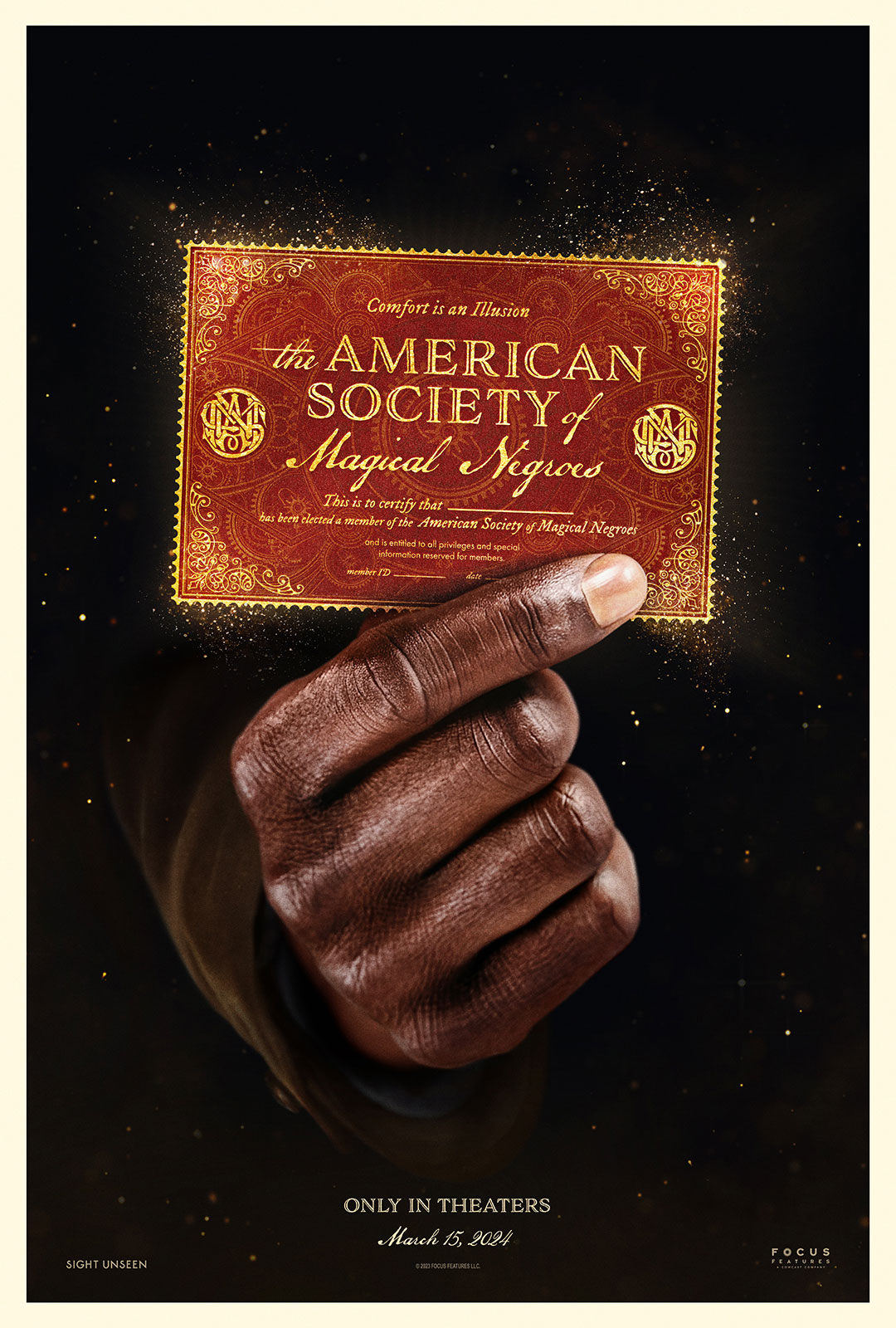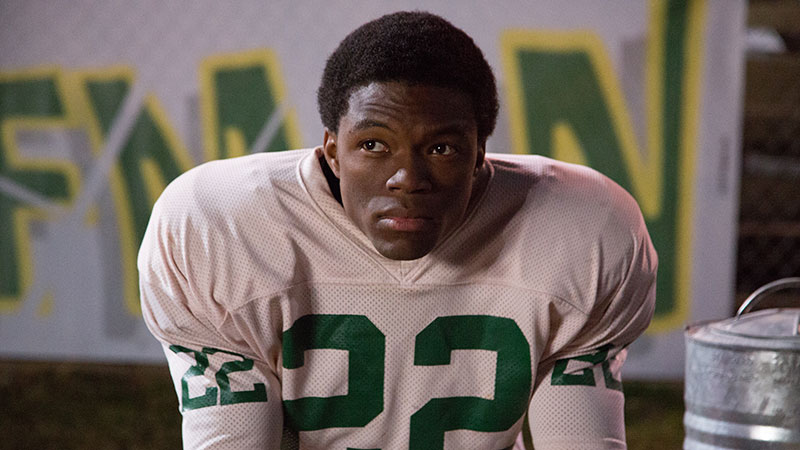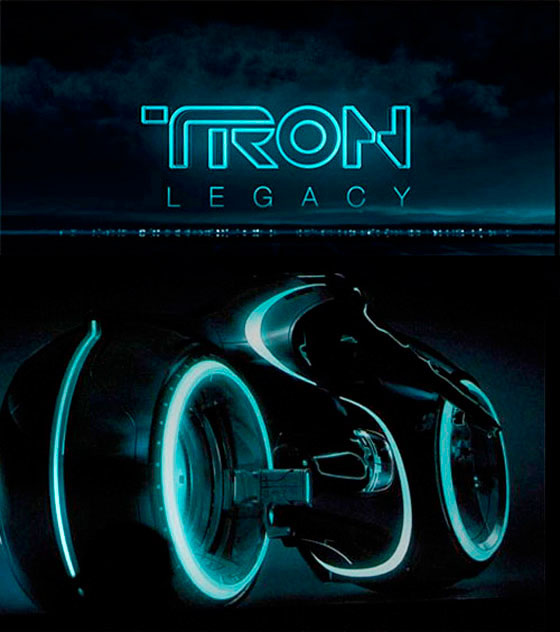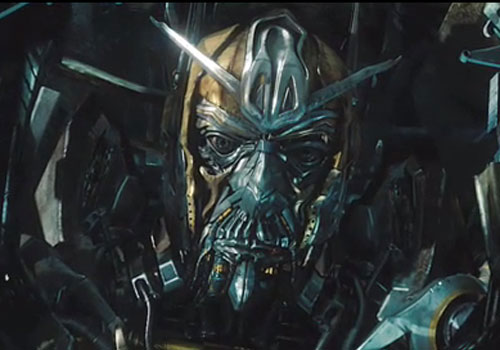“The American Society of Magical Negroes” represents a pivotal point in cinema that satirizes the entrenched “magical negro” trope prevalent in American film and television across the 20th century. This production, guided by writer, director, and producer Kobi Libii and aided by producers Julia Lebedev, Eddie Vaisman, and Angel Lopez, serves as a platform for critical discourse on racial stereotypes and societal norms. The narrative follows Aren, a young protagonist, who discovers and joins an enigmatic group of magical Black individuals with the primary mission of making white people feel more comfortable.
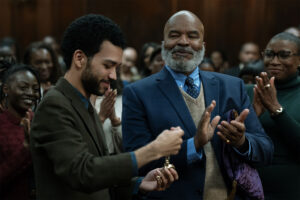
Actor Justice Smith, who portrays Aren, says that he is incredibly grateful for the project because it’s allowed him to get in touch with his own insecurities and re-examine some of the ways he moves through the world. Says Smith: “I don’t know if I would have done that without this project. My philosophies have shifted. And that hasn’t happened on most projects that I’ve done.”
Underlying Narrative and Directorial Intent
At its core, the film is a comedic yet sharply critical examination of a cinematic convention where Black characters exist almost exclusively to aid white protagonists without having significant backstories or conflicts of their own. Kobi Libii uses this film to delve into the deeper ramifications of such a trope on societal values and individual self-perception. Moreover, he explores the wider cultural implications, reflecting on how societal forces encourage Black individuals to navigate their identities in spaces dominated by whiteness.
Libii’s ambition was to subvert the traditional “Magical Negro” trope by transforming it into a full-time job scenario, thereby critiquing the absurdity of expectations placed upon Black individuals to prioritize white comfort over personal or communal well-being. This exaggerated premise not only points toward a severe critique of societal norms but also functions as a self-reflective journey for Libii, who draws from personal experiences and broader observations about racism, assimilation, and the survival tactics employed by Black individuals in America. The film, through its satirical lens, becomes a vessel for discussing the nuanced realities of race relations in the United States, challenging viewers to re-evaluate entrenched beliefs and biases.
Creative Genesis and Conceptualization
“The American Society of Magical Negroes” marks Kobi Libii’s feature directorial debut and originated from what he initially envisioned as a short-form comedic sketch. However, upon fleshing out the idea, Libii realized the concept’s potential to explore much deeper social commentary. This realization propelled the sketch into a feature film, presenting a unique opportunity to probe into the systemic issues faced by Black Americans through the medium of satire and fantasy. Libii’s prior involvement with Sundance’s Screenwriters and Directors Labs provided a foundational base, enriching his comedic background with a nuanced understanding of narrative development and directorial storytelling.
Doug Emmett | Director of Photography
Emmett worked to create three distinct-but-related looks for the film: one for the Society (heightened, Afrocentric lighting, an element magical realism), the ‘Real Word’ (still colorful, but more ‘real’) and the world of Aren and Lizzie (the ‘real’ world but with a subtly more delicate, ethereal look).
Beyond that, so many of the biggest choices came in trying to use the look of the film to reflect Aren’s moment-to-moment experience of the story. Emmett shares, “The scene I am most proud of was also one of the most challenging scenes that we shot. Aren finds himself outside of a night club approaching a line of white people. When our camera spins around him, the lights turn off,” explains Emmett. “And we are left with just Aren standing under a top light and a group of white people staring at him, reacting to his blackness. What was fun about that shot was not only the challenging camera work, but also being able to visually demonstrate Aren’s isolation in this stark beam of light; he’s alone in the world.”
Another element Emmett and Libii used to highlight Aren’s experience was the very deliberate use of focus throughout the film. Libii adds, “So much of the film is about who’s in focus and who’s in the background so there are all kinds of subtle ways we play with that throughout the film, including, at his most isolated, throwing Aren so far out of focus that he’s almost unseeable, obliterated.”
Laura Fox | Production Designer
Fox was so excited to work with Kobi on The American Society of Magical Negroes that she turned down any other work that could conflict. “I really loved it so much. It’s very funny and very timely. It also just seemed so fresh and important. I knew I would also have so many fun things to design. The whole movie is kind of a fairytale, although it’s rooted in reality. Once you have a world with magic, it gives you some license to play around.”
The team also focused on juxtaposing the very different textures of the tech company and Society headquarters. They’re deliberately different worlds: bright and airy, and dark and wood-paneled. Fox adds, “Kobi and I were attracted to the metaphor of this, in terms of what white and Black characters have to do to find acceptance in world.” Libii continues, “As a space, the mahogany look of the Society is asking to be respected and taken seriously. Black people have to do extra work to earn that respect and credibility. Whereas the ‘white world’ of the tech company is deliberately trying to seem less serious, less like a workplace. There’s a metaphor for privilege here: the white world takes it for granted that people will respect its seriousness of purpose while the Black world doesn’t have that luxury.
Fox also felt strongly about trying to shoot the whole Society in a single location. “In the original script, it was described as hallway after hallway, and room after room and we were able to create that sense of size and continuity by building it all within the original architecture of the Los Angeles Theatre, which is a beautiful, old theater that had the grandeur we needed.” Libii adds, “Laura and her incredible team really did build the whole Society in that one space. It happened to be the first place we shot and it was incredible for the cast and crew to literally walk into this magical space that she created.”
Character Dynamics and Thematic Exploration
The narrative intricately weaves together various character arcs and relationships, using each as a mirror to societal attitudes and individual struggles within a racially stratified society. Aren, as the protagonist, embodies the journey of self-discovery and confrontation with systemic conditions designed to marginalize and diminish Black identity. His interactions with other members of the secret society and subsequent disillusionment highlight the internal conflicts faced by Black individuals navigating a predominantly white society.
The film adeptly uses humor and absurdity to probe serious themes such as identity, assimilation, societal expectations, and racial stereotypes. It juggles the fantastical elements of its premise with a grounded examination of the societal values that birthed the “Magical Negro” trope, ultimately serving as a critique of American societal norms and the cinematic industry’s reliance on racialized character archetypes.
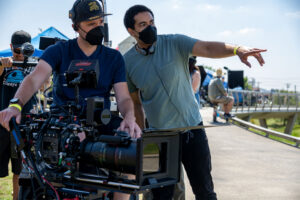
– DIRECTOR KOBI LIBII STATEMENT – The “Magical Negro” trope is a narrative device in which a Black, supporting character exists solely to serve a white protagonist’s storyline. They don’t have their own inner life but are relentlessly focused on helping white people learn, grow, or become less racist. Some have magical powers, but they all have a superhuman commitment to white, personal growth.
The Societal Implications and Broader Discourse
Beyond its immediate narrative, “The American Society of Magical Negroes” engages in a broader discourse on race relations, identity politics, and the transformative power of recognizing and subverting entrenched stereotypes. By framing the “Magical Negro” trope as an absurd job description, the film invites audiences to reflect on the often unconscious day-to-day compliances and adjustments made by Black individuals in predominantly white spaces.
The film particularly challenges the notion of main character status—both within the framework of storytelling and broader societal constructs—questioning whose comfort, safety, and narratives are prioritized and at whose expense. This brings to the fore discussions on representation, equality, and the importance of diversifying narrative perspectives in a way that respects and honors personal and communal truths.
Impact, Reception, and Legacy
As a cinematic work, “The American Society of Magical Negroes” stands as a bold critique of racial stereotypes and a rallying call for introspection and change within both the film industry and wider society. It uses satire not just as an entertaining vehicle but as a powerful tool for social commentary, engaging audiences in deep, uncomfortable yet necessary conversations about race, privilege, and identity.
The film’s opens up avenues for dialogue, challenging viewers to confront their preconceptions and consider the ongoing impact of racial stereotypes on individuals and society at large.
In sum, “The American Society of Magical Negroes” is more than just a film; it is a statement piece that embodies the complexities of navigating racial identities within a framework that has historically marginalized and commodified Black existence for the comfort of whiteness. Through a masterful blend of comedy, fantasy, and satire, Kobi Libii and his team beckon audiences to embark on a journey of reflection, understanding, and, ultimately, transformation. The film not only marks a significant entry into Libii’s directorial career but also contributes meaningfully to ongoing discussions about race, representation, and the power of cinema to challenge and reshape societal narratives.
“White people write the Magical Negro trope as a kind of ‘Happy Slave’ archetype that imagines Black people truly enjoy contorting themselves to fit into white systems of power. I’m hijacking the trope to explore some of what it really costs Black people to do so.” – KOBI LIBII

